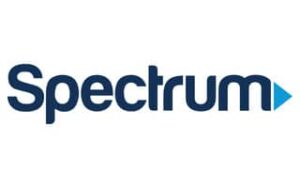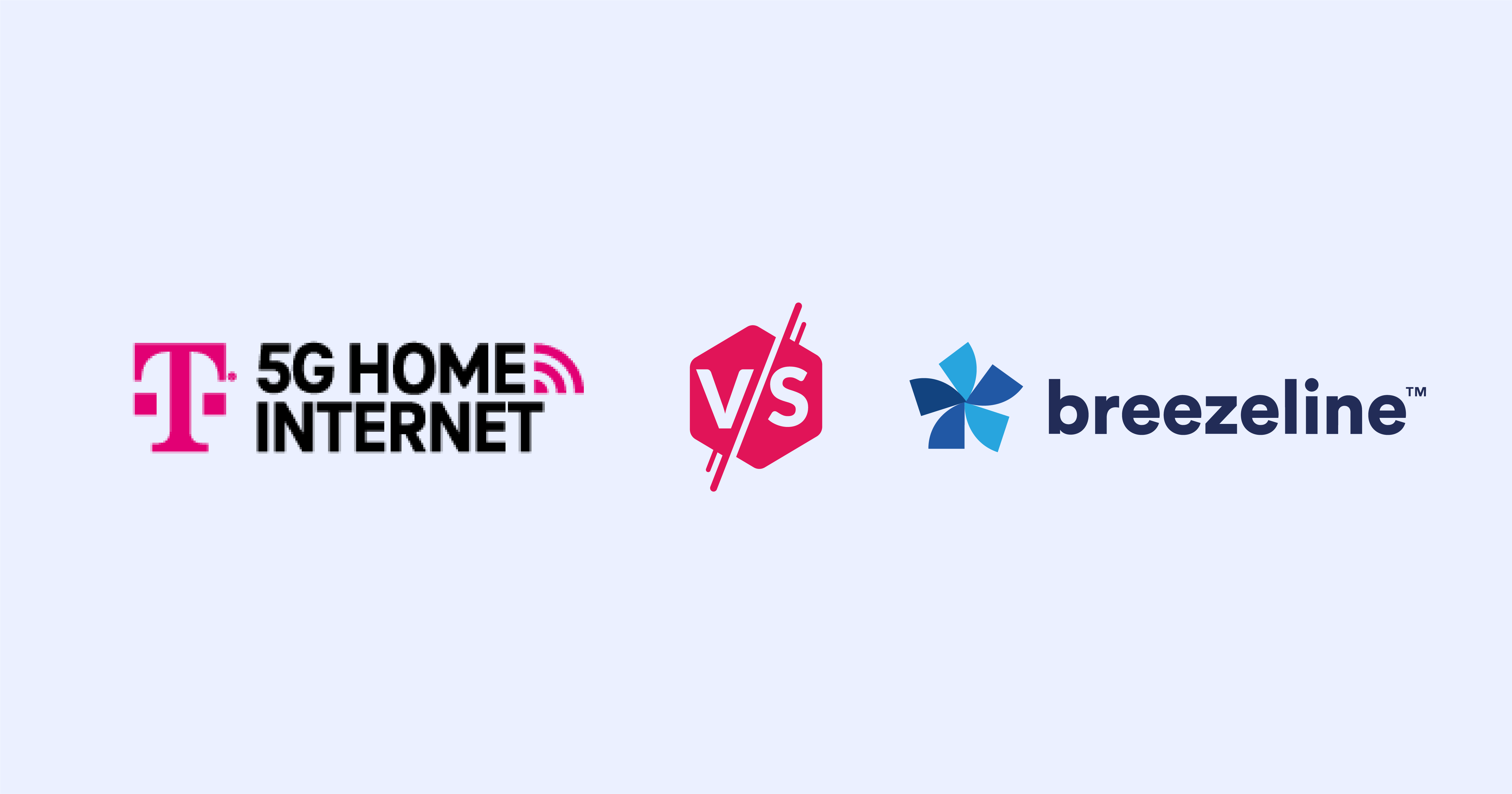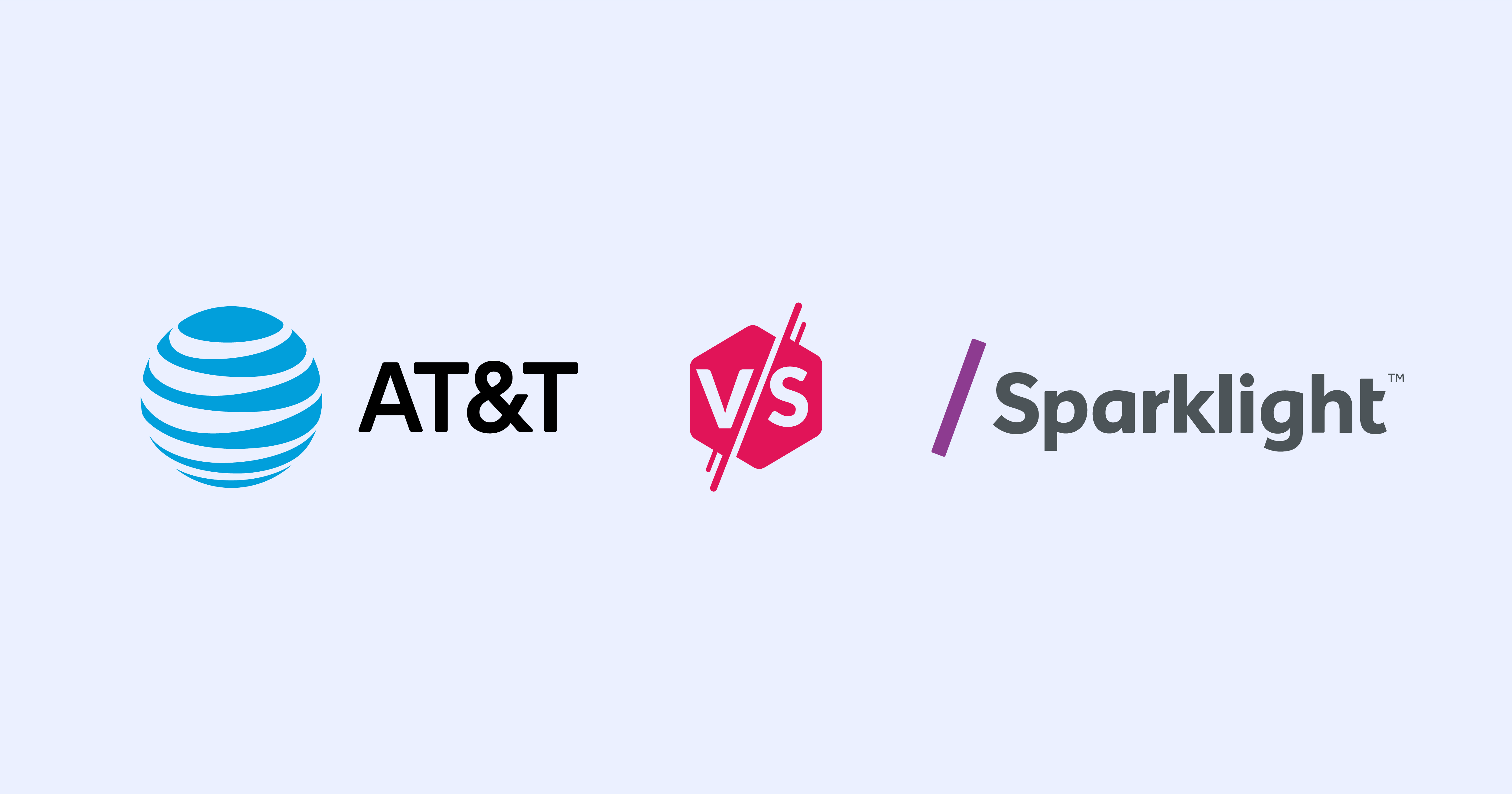The 5 Best No-Contract Internet Plans
Get reliable internet with no strings attached.
Oct 19, 2023 | Share
Brand Guides
-
Best overall
 Google Fiber 1 Gig
Google Fiber 1 Gig- $70.00/mo.*
- Fiber
- Speeds up to 1Gbps (1,000Mbps)
-
Best budget planOptimum Fiber Internet 300
- $30.00/mo.†
- Cable
- Speeds up to 300Mbps
-
Best fiber availability
 AT&T Internet 1000
AT&T Internet 1000- $80.00/mo.‡
- Fiber
- Speeds up to 5,000Mbps#
-
Best unlimited data
 Spectrum Internet®
Spectrum Internet®- $49.99/mo.§
- Cable
- Speeds up to 300Mbps
-
Best availability
 Xfinity Prepaid Internet
Xfinity Prepaid Internet- $45.00/mo.‖
- Cable
- Speeds up to 50Mbps
Data effective 5/26/2023. Offers and availability may vary by location and are subject to change.
Read disclaimers.
Looking for a more flexible internet plan? See what’s available in your area by entering your zip code below.
Jump to: Best overall | Best budget plan | Best fiber availability | Best unlimited data | Best availability | Best starter plan | Best DSL plan | What to look for | Our verdict | FAQ
Jump to:
Our pick: Which no-contract internet is best?
Google Fiber is by far the best no-contract internet out there. It comes with free professional installation and free equipment, so there are no upfront costs and no hidden fees. It also boasts one of the fastest and most reliable connections you can get for the price. If Google Fiber is available in your area, we highly recommend it.
Best no-contract internet plans
| Best for | Plan | Price | Type | Download Speed | Order online |
|---|---|---|---|---|---|
| Best overall | Google Fiber 1 Gig | $70.00/mo.* | Fiber | 1Gbps (1,000Mbps) | |
| Best budget plan | Optimum Internet 300 | $30.00/mo.† | Cable, fiber | 300Mbps | |
| Best fiber availability | AT&T Internet 1000 | $80.00/mo.‡ | Fiber | 1,000Mbps†† | |
| Best unlimited data | Spectrum Internet® | $49.99/mo. for 12 mos.§ | Cable | Up to 300Mbps (wireless speeds may vary) | |
| Best availability | Xfinity Prepaid Internet | $45.00/mo.‖ | Cable | 50Mbps | |
| Best DSL plan | CenturyLink Simply Unlimited Internet 100 Mbps | $55.00/mo.** | DSL | 100Mbps |
Data effective 5/26/2023. Offers and availability may vary by location and are subject to change.
Read disclaimers.
What should you look for in a no-contract internet plan?
What you want from a no-contract internet plan:
- An internet speed that’s fast enough to meet your needs
- A monthly bill that fits your budget
- Minimal hidden costs or fees—or none at all
- A reliable connection type like cable or fiber
Let’s break it down.
Speed
The most important thing in choosing a no-contract internet plan is selecting one that matches your internet speed needs. Avoiding long-term contracts can make your life easier, but not if it makes everyday tasks like work or school harder. No-contract internet plans can vary substantially in price and speed, so make sure that the one you choose fits your lifestyle.
For example, Google Fiber is 50 times faster than Xfinity Prepaid Internet, while costing you only an additional $25 per month. While that may seem like a great deal for a lot more speed, all that extra speed isn’t going to make a very big difference if you can already do what you need on a slower connection. Your extra $25 per month ($300 a year) will be wasted.
Low Price
No-contract plans often have a higher monthly cost than plans that lock you in for a full year. These additional costs are definitely going to be cheaper than paying termination fees, but a few bucks a month still adds up. Compare the options in your area and make sure the plan you choose fits your budget.
No hidden fees
Another important feature in a no-contract plan is transparent billing. You should pay a flat rate every month, with no hidden price hikes or cancellation fees. You might have an equipment fee if you rent your modem from your service provider, but that’s about it.
Do I need fiber?
It’s important to pay attention to the type of connection you sign up for. Fiber networks are fast, reliable, and rarely require maintenance. Cable and DSL can both fall short of their advertised speeds in certain situations (like high-traffic periods on a cable connection), and both require more maintenance, which can cause internet outages.
Even though fiber connections are the cutting edge of home internet, many fiber plans don’t require contracts. Providers like AT&T and Google Fiber trust that once you switch to fiber, you won’t want to go back.
Fiber plans are amazing, but while often reasonably priced, there’s usually a cheaper option. When comparing plans, be sure to consider more than just speed and price.
Best overall—Google Fiber 1 Gig
*Terms and Conditions: Plus taxes and fees. Service not available in all areas. If you live in an apartment or condo, Google Fiber’s ability to construct and provide Fiber is subject to the continued agreement between Google Fiber and the property owner. Upload/download speed and device streaming claims are based on maximum wired speeds. Actual Internet speeds are not guaranteed and may vary based on factors such as hardware and software limitations, latency, packet loss, etc.
Google Fiber is hands down the best no-contract internet plan available. In fact, it even beats the discounted plans that you can get when you sign a long-term contract or bundle multiple services. Google Fiber doesn’t require a long-term contract on any of its plans. There are no data caps and no hidden fees. There are literally no downsides if you can get Google Fiber.
Getting it, of course, is the tricky part. There are only a handful of cities in the US that have access to Google Fiber. And coverage is limited even within those cities. The rapid expansion of Google Fiber’s network ground to a halt after the company was forced to pull out of Louisville, Kentucky, after its new microtrenching technology failed.1
If you’ve been holding out all these years in the hope that Google Fiber might reach your city, the odds aren’t looking so good. However, Google did recently announce its first new Google Fiber city in four years, so there’s still hope. But don’t hold your breath. Google also debuted its first 2Gbps connections, once again raising the bar for fiber providers.2, 3
Google Fiber also offers a contract-free, 2Gbps plan in some areas. This is far more speed than most households need, but it’s an amazing offer for those who like to be on the cutting edge of technology.
 Pros:
Pros:
- Fastest download speeds
- Most reliable connection
 Cons:
Cons:
- Limited availability
Best budget plan—Optimum Internet 300
†w/Auto Pay & Paperless Bill. Terms apply. Not available in all areas.
Optimium Internet 300 is an amazing deal. There are no data caps and it’s cheaper than most no-contract cable and DSL plans. This means that you’ll have a reliable connection that doesn’t slow down at peak hours and has blazing fast upload speeds. This makes it perfect for bingeing Netflix after work, livestreaming on Twitch, or conducting work meetings over Zoom.
It’s important to note that Optimum has a relatively small footprint nationwide. And it also provides fiber internet, so this plan will be available to only a subset of Optimum customers. But if Optimum is available in your area, this plan is the best one you can get.
 Pros:
Pros:
- Low monthly price
- Fiber connection
 Cons:
Cons:
- Slower-than-average speeds for fiber
- Limited availability
- Installation fees
Best fiber availability—AT&T Internet 1000

‡Plus taxes. Price after $5/mo Autopay & Paperless bill discount (w/in 2 bills). Monthly State Cost Recovery Charge in TX, OH, NV applies.
††Internet speed claims represent maximum network service capability speeds and based on wired connection to gateway. 1GIG speeds avail. to new customers with the latest router (“BGW320”) and recommended setup. For 5 GIG speed, single device wired speed maximum 4.7 Gbps. Actual customer speeds may vary based on a number of factors and are not guaranteed. For more information, go to www.att.com/speed101.
AT&T is one of the largest internet providers in the US. It doesn’t offer fiber throughout its entire coverage area, but it has a much larger fiber network than competitors like Google Fiber—and this network is constantly expanding.
AT&T’s gigabit fiber plan is more expensive than many of the no-contract options available, but it’s pretty reasonable for a fiber plan. Combine that with the freedom to cancel at any time without termination fees (AT&T got rid of long-term contracts on all its plans), and you’ve got a pretty great deal.
 Pros:
Pros:
- Wide availability
- Fast speeds
 Cons:
Cons:
- Higher monthly cost
Best unlimited data—Spectrum Internet®

Specs
- Download speeds up to 300Mbps (wireless speeds may vary)
- Cable
- $49.99/mo. for 12 mos.§
§ For 12 months when bundled. Limited time offer; subject to change; valid to qualified residential customers who have not subscribed to any services within the previous 30 days and who have no outstanding obligation to Charter.
Spectrum has a lot of the things we love to see in internet providers. None of its plans have contracts, and none of its plans have data caps. These are two things that we think all internet customers should expect from their provider, but for now, Spectrum is ahead of the crowd.
The Spectrum Internet® plan gives you 300Mbps download speeds (wireless speeds may vary), which is fast enough for most online activities. You could even have multiple people streaming video in 4K and still have bandwidth to spare.
Spectrum actually offers an even faster gigabit connection with a new low price—Spectrum ditched the hefty activation fee too, which is nice. But the monthly fee increases to $114.99 by the third year, so if you really need gigabit speeds, go with a cheaper fiber plan like those offered by Google Fiber or AT&T.
If you don’t need gigabit internet, Spectrum Internet® Ultra is a great plan with plenty of speed.
 Pros:
Pros:
- Unlimited data
- Free modem or gateway
 Cons:
Cons:
- Price hikes after 12 mos.
- Monthly WiFi charge
Best availability—Xfinity Prepaid Internet
‖Requires a $35 modem purchase
Xfinity’s best quality is simply its pervasiveness. Xfinity is everywhere. This may not exactly sound like high praise, but considering that the biggest drawback of Google Fiber and Optimum Fiber is their limited availability, having a nationwide network is nothing to sneeze at.
Xfinity Prepaid Internet is certainly not the fastest plan, even when compared to Xfinity’s other offers. You pay more for the same speeds you’d get with a contract. However, if you’re looking for a plan you can set up right away without committing to a contract, Xfinity Prepaid Internet is a very convenient choice.
You still have to purchase a modem to get started, but Xfinity offers low-cost refurbished modems for $35, which is a pretty reasonable price. Professional installation for Xfinity costs $89.99, but if your house is already wired for Xfinity, you can get the equipment to install it yourself.
 Pros:
Pros:
- Wide availability
- Good monthly price
 Cons:
Cons:
- Slow speeds
Best DSL plan—CenturyLink Simply Unlimited Internet 100 Mbps
**Speed may not be available in your area. Paperless billing or prepay required. Additional taxes, fees, and surcharges apply. Get the fastest internet speed available at your location (max speed is up to 100 Mbps).
When people think of high-speed internet connections, DSL is usually not what first comes to mind. They wouldn’t be wrong either—DSL’s top speeds are far lower than those of cable or fiber. It might be surprising, then, that CenturyLink’s no-contract DSL plan offers higher speeds than many cable internet plans.
The installation costs for CenturyLink can vary a lot. They do give the option for a standard installation kit, which costs $15. That works great as long as your house is already wired, which will eliminate most upfront costs altogether. You also have the option for a technician to come out, which can cost $99. If they have to run new aerial cables from the nearest utility pole, you may have to pay more. You can also purchase your modem up front, but if you want the flexibility to change providers without wasting your investment, it might be worth it to simply rent a modem for $15 per month.
There are still a lot of downsides to a DSL connection. DSL usually has low upload speeds, and your download speeds can be lower than advertised if your provider’s network hub is far away from where you live. However, DSL is much more widely available in rural areas. While it may not keep up with cable or fiber, it’s still a much better option than satellite. If DSL is what you’re looking for, you’d be hard-pressed to find a better deal than this one.
 Pros:
Pros:
- Decent download speeds
- Reasonable prices
 Cons:
Cons:
- Slow upload speeds
- Older infrastructure
- High installation costs
Our verdict: Get Google Fiber if it’s available
Google Fiber hits all the most important points for a good no-contract internet plan. It’s got a simple, contract-free monthly bill, a reliable fiber network, and incredibly fast speeds. The only downside is that it’s still only available in a handful of cities in the US.
If Google Fiber isn’t an option for you, look at other fiber providers, like AT&T or Optimum. While Optimum’s Fiber Internet 300 plan is the most affordable option, other providers like AT&T also offer faster fiber plans more comparable to Google Fiber speeds.
Whichever plan you choose, just make sure to consider the upfront costs in your calculations so you don’t end up making a big investment for a plan you’re not intending to keep.
Additional no-contract plans
| Plan | Price | Type | Download Speed | Get it |
|---|---|---|---|---|
| Google Fiber 2 Gig | $100.00/mo.* | Fiber | 2Gbps (2,000Mbps) | |
| AT&T Fiber Internet 500 | $65.00/mo.† | Fiber | 500Mbps | |
| CenturyLink Fiber Gigabit Internet | $75.00/mo.‡ | Fiber | 940Mbps | |
| Astound Broadband 300 Mbps Internet | $20.00–25.00/mo. (depending on service area)§ | Cable, Fiber | 300Mbps |
Data effective 5/26/2023. Offers and availability may vary by location and are subject to change.
Read disclaimers.
No-contract internet FAQ
What is a short-term internet contract?
The shortest term for which you can purchase internet is usually one month, since the billing cycle for internet service generally operates on a monthly basis. Since you have to make only a single payment to get one month’s worth of internet, these plans are generally referred to as no-contract, pay-as-you-go, or monthly internet plans.
If a full month still sounds like a long time, some mobile Wi-Fi hotspots offer service on a per-day basis. You can also make use of public Wi-Fi hotspots if there’s one close to your home.
How much does no-contract internet service cost?
No-contract plans are fairly close in price to comparable plans that require year-long contracts. ISPs that offer plans both with and without contracts generally offer a discount to customers who sign up for a contract, making their no-contract plans slightly more expensive. There are, however, many ISPs that have abandoned contracts altogether and these plans are sometimes cheaper than similar plans from other ISPs that require long-term contracts.
We’re not big fans of contracts. With some of the biggest names in the internet business ditching contracts altogether, it’s pretty hard to argue that they’re necessary in 2023. The more we see consumers choosing no-contract plans over traditional 12- or 24-month contracts, the more we’re going to see other ISPs following suit and ditching their strict contracts and excessive termination fees.
What is the best no-contract internet service?
Google Fiber is the best no-contract internet service you can get, based on our research. There are no hidden fees or unexpected price hikes. The service is also superfast and reliable. The only downside is that Google Fiber is available in only a few cities, so if you don’t live in one of them, you’ll have to choose another provider.
Google Fiber has begun expanding its network once again, so although its reach is still very limited, some people will soon have Google Fiber available in their cities.
What no-contract internet plans are available in rural areas?
It’s hard to find no-contract internet plans in rural areas, particularly areas that have only satellite internet available. Satellite internet almost always requires a two-year contract, as well as the installation of expensive equipment.
One potential alternative to satellite internet is using mobile hotspots. Often you can set up a mobile hotspot using your cell phone. You can also purchase a dedicated mobile hotspot, independent of your phone plan. This requires both buying the device and paying for the data, so it’s a much bigger investment than simply setting up a hotspot on your phone.
How do I get out of my internet contract?
Getting out of your internet contract typically requires you to pay an early termination fee (ETF) that’s dependent on how many months remain in your contract. These fees can be very high, which is why you should never enter into an internet contract lightly.
One way to get out of a contract without taking a financial hit is to find someone to pay the fee for you. Some internet providers will pay your early termination fee (or, more often, reimburse you) if you switch to one of their plans. Of course, this means getting into another contract. But if you have to switch anyway, this can be a nice perk when choosing your new internet provider.
Sources
- Jon Brodkin, Ars Technica. “Google Fiber’s Biggest Failure,” February 2019. Accessed August 20, 2020.
- 9 to 5 Google. “Google Fiber Announces First New Market in 4 Years with Public-Private Partnership,” July 6, 2020. Accessed August 20, 2020.
- Amalia O’Sullivan, Google Fiber Blog, “The Next Step in Speed—Experience 2 Gig Now with the Google Fiber Trusted Tester Program,” September 14, 2020. Accessed February 17, 2021.
Disclaimers
The 5 Best No-Contract Internet Plans
* Terms and Conditions: Plus taxes and fees. Service not available in all areas. If you live in an apartment or condo, Google Fiber’s ability to construct and provide Fiber is subject to the continued agreement between Google Fiber and the property owner. Upload/download speed and device streaming claims are based on maximum wired speeds. Actual Internet speeds are not guaranteed and may vary based on factors such as hardware and software limitations, latency, packet loss, etc.
† w/Auto Pay & Paperless Bill. Terms apply. Not available in all areas.
‡Speeds based on wired connection. Actual speeds may vary. For more info, go to www.att.com/speed101.
Price after $5/mo Autopay & Paperless bill discount (w/in 2 bills). Plus taxes & fees. Monthly State Cost Recovery Charge in TX, OH, NV applies. One time install chrg may apply. Ltd. avail/areas. Call or go to www.fiber.att.com to see if you qualify.
Price after $5/mo Autopay & Paperless bill discount (w/in 2 bills). Plus taxes & fees. Monthly State Cost Recovery Charge in TX, OH, NV applies. Ltd. availability/areas.
§ For 12 months when bundled. Limited time offer; subject to change; valid to qualified residential customers who have not subscribed to any services within the previous 30 days and who have no outstanding obligation to Charter.
‖ Requires a $35 modem purchase
# Internet speed claims represent maximum network service capability speeds and based on wired connection to gateway. 1GIG speeds avail. to new customers with the latest router (“BGW320”) and recommended setup. For 5 GIG speed, single device wired speed maximum 4.7 Gbps. Actual customer speeds may vary based on a number of factors and are not guaranteed. For more information, go to www.att.com/speed101.
Best no-contract internet plans
* Terms and Conditions: Plus taxes and fees. Service not available in all areas. If you live in an apartment or condo, Google Fiber’s ability to construct and provide Fiber is subject to the continued agreement between Google Fiber and the property owner. Upload/download speed and device streaming claims are based on maximum wired speeds. Actual Internet speeds are not guaranteed and may vary based on factors such as hardware and software limitations, latency, packet loss, etc.
† w/Auto Pay & Paperless Bill. Terms apply. Not available in all areas.
‡ Plus taxes. Price after $5/mo Autopay & Paperless bill discount (w/in 2 bills). Monthly State Cost Recovery Charge in TX, OH, NV applies.
§ For 12 months when bundled. Limited time offer; subject to change; valid to qualified residential customers who have not subscribed to any services within the previous 30 days and who have no outstanding obligation to Charter.
‖ Requires a $35 modem purchase
# No term agreement. Same price for 3 yrs.
** Speed may not be available in your area. Paperless billing or prepay required. Additional taxes, fees, and surcharges apply. Get the fastest internet speed available at your location (max speed is up to 100 Mbps).
†† Internet speed claims represent maximum network service capability speeds and based on wired connection to gateway. 1GIG speeds avail. to new customers with the latest router (“BGW320”) and recommended setup. For 5 GIG speed, single device wired speed maximum 4.7 Gbps. Actual customer speeds may vary based on a number of factors and are not guaranteed. For more information, go to www.att.com/speed101.
Additional no-contract plans
*Terms and Conditions: Plus taxes and fees. Service not available in all areas. If you live in an apartment or condo, Google Fiber’s ability to construct and provide Fiber is subject to the continued agreement between Google Fiber and the property owner. Upload/download speed and device streaming claims are based on maximum wired speeds. Actual Internet speeds are not guaranteed and may vary based on factors such as hardware and software limitations, latency, packet loss, etc.
†Price after $5/mo Autopay & Paperless bill discount (w/in 2 bills). Plus taxes & fees. Monthly State Cost Recovery Charge in TX, OH, NV applies. One time install chrg may apply. Ltd. avail/areas. Call or go to www.fiber.att.com to see if you qualify.
‡Speed may not be available in your area. Maximum download/upload speed of up to 940 Mbps via a wired connection. Paperless billing required. Taxes and fees apply. Offer details. Offer includes professional installation at customer’s eligible location.
§No contract required. 24 Month Internet Pricing. Equipment priced separately. Includes $5 discount w/ ebill & autopay. Observed speeds may vary. Excludes surcharges and fees. New residential customers only.
Author - Peter Christiansen
Peter Christiansen writes about satellite internet, rural connectivity, livestreaming, and parental controls for HighSpeedInternet.com. Peter holds a PhD in communication from the University of Utah and has been working in tech for over 15 years as a computer programmer, game developer, filmmaker, and writer. His writing has been praised by outlets like Wired, Digital Humanities Now, and the New Statesman.
Editor - Cara Haynes
Cara Haynes has been editing and writing in the digital space for seven years, and she's edited all things internet for HighSpeedInternet.com for five years. She graduated with a BA in English and a minor in editing from Brigham Young University. When she's not editing, she makes tech accessible through her freelance writing for brands like Pluralsight. She believes no one should feel lost in internet land and that a good internet connection significantly extends your life span.






